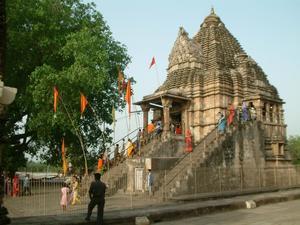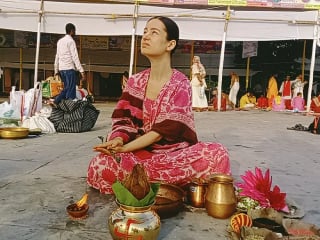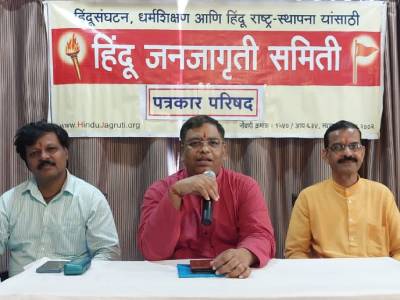Many times we find that people often quote the Khajuraho Temples as an excuse to equate Hinduism and Hindu Deities with nudity and sex. What is actually Khajuraho, what does it contain and how many of the quoters have actually visited the Temples ? Here are the facts.






The name Khajuraho may be derived from khajura (date palm), which grows freely in the area and perhaps because there were two golden khajura trees on a carved gate here. The old name was Kharjuravahaka (scorpion bearer), the scorpion symbolizing poisonous lust. The temples were built under the late Chandela kings between 950 and 1050 AD in a truly inspired burst of creativity. With the fading of Chandela fortunes, the importance of Khajuraho waned but temple building continued until the 12th century at a much reduced pace. The Chandelas were followers of the Tantric cult which believes that gratification of earthly desires is a step towards attaining the ultimate liberation. Tantrism has been mostly misunderstood and the Philosophical part of Tantras like the Mahanirvana Tantra have been totally forgotten. This was one of the reasons why Tantrics perished. Nevertheless it remains a distinct path of Spiritual Practice though it has very few followers all over the world.
1. It must be emphasized that Khajuraho Temples, do not contain sexual themes inside the Temple premises or near the deity but only on external carvings. They portray that for seeing the deity, one must leave his sexual desires outside the Temple. They also depict that the inner deity of the Temple is pure like the soul (atman) which is unaffected by sexual desires and other gross tendencies, destiny etc, whereas the external curvature and carvings of the Temples depict the bodily changes that occur in us.
2. Only as many as 10% carvings contain sexual themes, not between any deities but between ordinary humans. The rest depict the common man’s life of those days. For example ladies applying makeup, musicians, potters, Farmers etc. All these are away from Temple deities. They give the message that one should always have God as the central point in one’s life even though one is engaged in worldly activities.
3. It is a misconception that since Khajuraho are Temples, they depict sex between deities !
4. In Khajuraho Temples, the idols of Shiva, Nandi, Goddess Durga, Incarnations of Vishnu etc are fully clothed.
5. All over India, in no Temples have idols of Deities been shown nude and in sexual positions !
6. Types of beauty in the Hindu religion – Union of man and woman
‘The basic Universal Divine Energy (Shakti) is a symbol of the union of man and woman and it is the main spiritual emotion in Hindu art depicted in the man-woman sculptures seen in Amravati, Khajuraho, Konark, etc.Here Divine Energy (Shakti) manifests in the man-woman union, the basis of Vedic art and culture. Sculptures in the Ajanta caves are also a depiction of the man and woman, but sexual congress is prohibited in the sculptures’. Bharatiya Sanskruti Kosh, pages 166-169






Really interesting. Thanks for the information.